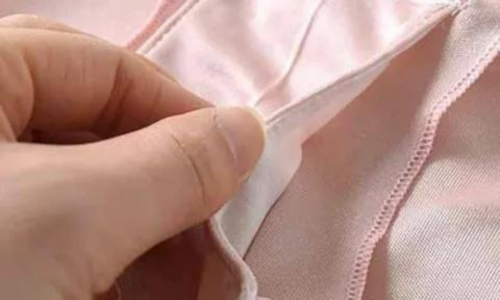
Women’s fashion can be weird. Many women know the curse of finding dresses with pockets, but it seems like all underwear has pockets.What is that little pocket in the crotch of your panties? Surely it’s not meant to replace pockets in other layers of clothing, right? Let’s not get into the logistics of how uncomfortable it would be to sit if you actually stowed anything. what is the deal?
First, the pockets are not for storage. It is neither for decoration nor for extra protection in case of wardrobe failure. Women’s underwear has a crotch pocket called a gusset. Gussets are very important and are designed to protect the female parts. Everyone can agree that this is a good thing.
The purpose of the gusset is to:

Women’s underwear is often made of synthetic materials, such as lace. Lace may look sexy, but it’s not very breathable, so it’s easy for bacteria and sweat to accumulate in your underwear. increase. not fun. Gussets are typically made of cotton, a breathable, non-synthetic fiber that helps keep things dry and breathable.Not only is the gusset hygienic, but it also has a little extra fabric. This makes the panties more breathable and reduces the risk of uncomfortable conditions such as yeast infections and urinary tract infections.
Gussets also have another function. Because synthetics aren’t always the most comfortable (think how bare lace feels on sensitive skin), the gusset provides a soft, cozy place for the female bit to rest. and protects against abrasion.
Even if your fancy synthetic panties have gussets, your best bet is still plain old cotton underwear. It is important.
Breathability is even more important when you are active all day. Skip synthetics if you think you might sweat. This is especially true if you are prone to bacterial problems. Cotton panties may not look as sexy as lacy Victoria’s Secret lingerie, but they’re much more comfortable than a yeast infection.
Is your underwear (or the one without it) really safe?

If you’ve learned all this and still don’t want to wear cotton underwear, there are some non-cotton options that are better than others. It may be more stretchy and fit snugly under clothing, but it still has a cotton crotch,” Dr. Melissa Pillian told Health.
But be careful with the strings. For some people, thongs are an easy way to spread bacteria. most common bacteria), and if you’re moving, that material can move,” Jill M. Rabin, PhD, told The HuffPost. “Just move it an inch or two and it’s next to your vagina or urethra. That string could be depositing colonic bacteria in your vagina or urethra.”
Additionally, wearing a thong during your period can further increase your risk of infection as menstrual fluid increases the pH of the fluid in your vagina, making it easier for bacteria to grow. Thongs can irritate the sensitive skin of your hip joints and make hemorrhoids worse.
How about going commando? Not only is it completely safe, but it can also be beneficial—at least overnight. “This helps reduce chronic inflammation,” Dr. Susannah Chatterjee told Oprah. Please find.”
It goes without saying that you should change your underwear every day. If you recycle your panties without washing them, that bacteria and sweat will accumulate, whether your underwear has pockets or not.
Leave a Reply